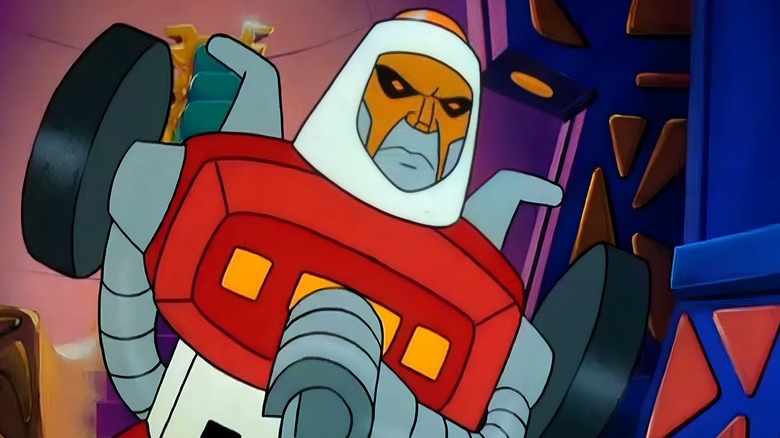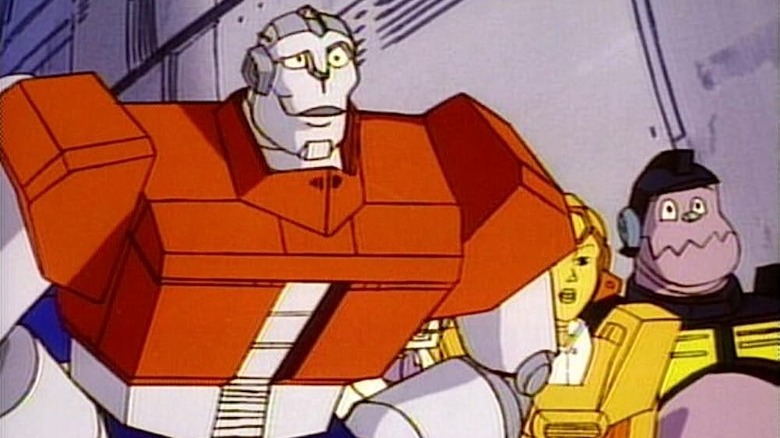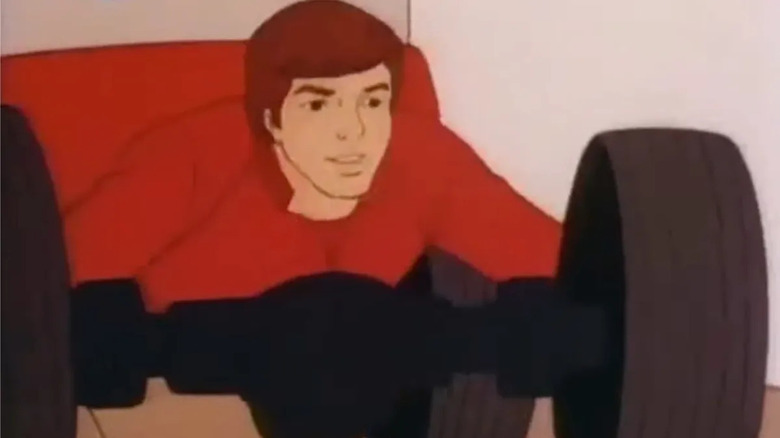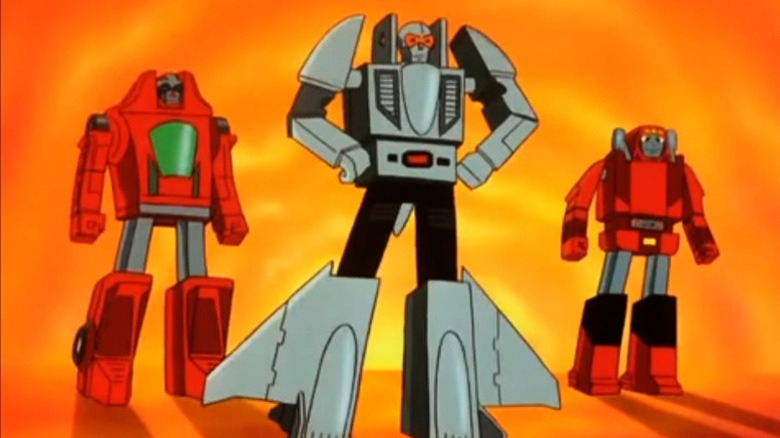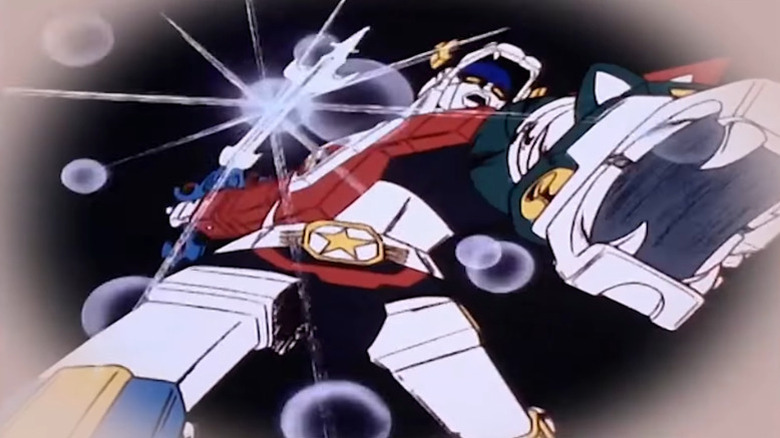Transformers Wasn't The First 'Robots In Disguise' Series — What Happened To The Others?
The hit cartoon series and toy line "Transformers" is, quite famously, more than meets the eye. That's partly because the premise of the franchise involves alien robots who impersonate various pieces of human machinery and vehicles, but also because after nearly forty years of storylines, reboots, spin-offs, and movies, there is too much "Transformers" media out there to absorb it all at once, or even over a summer, or maybe even a lifetime (depending on how much other stuff you've got to do).
Although the success of "Transformers" is certainly based partly on their transformational toy gimmick, it would be a stretch to say that it's based on novelty. "Transformers" wasn't the first media franchise, toy line, or animated series based around the idea of transforming robots. Heck, it wasn't even the first animated series based on that concept to debut in 1984. Or the second. Or the third. Or the fourth. Or the fi... wait, actually, it was the fifth, never mind.
Yes, no less than four animated TV shows managed to beat "Transformers" to the punch in that fateful fall television season. Some have fallen into obscurity, and some fought toe-to-toe with "Transformers" for dominance, but only one is still a bona fide hit.
Let's take a look at the other transforming animated series from 1984.
The Mighty Orbots fought the law (and the law won)
There was no shortage of TV series in 1984 about robots that combined forces and became a much bigger robot, but "The Mighty Orbots" is arguably the least successful and it's not entirely the show's fault.
An American/Japanese co-production, "The Mighty Orbots" takes place centuries into the future, where a teen genius creates a small army of super-powered robots to fight the villainous SHADOW group, led by a gigantic supercomputer called Lord Umbra. The Orbots themselves have distinct, human personalities, and experience insecurity, jealousy, and even amorousness when they're not kicking butt. In the pilot episode, they rescue a pair of rock stars who turn out to be villains with plans to use their music to create a giant magnetic monster that renders the robots useless.
Of all the transforming-robot shows of 1984, "The Mighty Orbots" is the most impressive visually, with fluid animations and expressive character designs. It makes sense since it came courtesy of anime director Osamu Dezaki, who previously worked on classics like "Astro Boy," "Lupin III," and "Golgo 13," and would later bring his superlative work to the "Bionic Six."
Quality aside, "The Mighty Orbots" hit a serious snag when the creators were sued by the toy manufacturer Tonka, which claimed the Orbots were too similar to their series and marketing efforts for "Challenge of the GoBots." But we'll get to the GoBots later.
The Cronenbergian nightmare that was Turbo Teen
Lots of cartoons are — weirdly enough — about things that transform into cars, or cars that transform into things. The short-lived but notorious animated series "Turbo Teen" took it a step too far, by telling the story about a human being who transforms into a car in the most horrifying way possible, raising disturbing questions that no child wanted to ask in the middle of a Saturday morning while they were trying to enjoy their Apple Jacks.
Brett Matthews, if that is his real name (it is), was driving along one day and crashed his car into a fancy experimental lab where a weird energy beam struck him and fused him and his car together. But instead of just downloading Brett's brain into his car like "Knight Rider" or turning Brett into a cool robot car creature, it made Brett uncontrollably transform into a car whenever he gets too warm, and uncontrollably transform back whenever he gets too cold.
The first episode of "Turbo Teen" illustrates how awkward this is when Brett, as a car, takes his girlfriend and best friend to a drive-in. They're sitting inside Brett's stomach but whoops! They spill their icy beverage, forcing Brett to physically warp back into his usual self, with his girlfriend sitting astride him, very weird-like.
The oft-repeated transformation sequence where Brett's hands become wheels, his torso stretches terrifyingly, and his butt becomes a trunk and his face stretches into an engine block has given many kids nightmares over the years. I know. I was one of them.
"Turbo Teen" isn't available legally, and only a few episodes have surfaced online. According to Secret Galaxy, the show is now at least partially lost media, even though it is quite famous. Or at least infamous.
The Gobots got up and went
Transformers may have captured the hearts and minds of children all over the world, but the GoBots captured most of whatever was left. Even though "Challenge of the GoBots" debuted nine days before "Transformers" — on the very same day as "The Mighty Orbots" and "Turbo Teen" (and two days before "Voltron") — Tonka's version of robots who disguise themselves as various vehicles and gadgets never quite caught on the way the Transformers did.
The two shows have a lot of similarities, starting out on a mechanical planet populated by shape-changing robots in the midst of a civil war, with the warring groups traveling to Earth to continue their battles amongst human beings who get swept up in their struggles. Both series began with a multi-episode story arc that introduced the main cast and the ongoing storylines, and both series were shameless toy commercials for doodads that switched between robots and cars or planes or motorcycles if you tinkered with them for a while.
Although story-wise "Challenge of the GoBots" isn't all that different from "Transformers," the series is animated more stiffly, as though the showrunners didn't want to suggest that the characters in the show were more flexible than the toys the target audience would pick up at the store. It's a miscalculation since it makes the world of the GoBots look a lot less immersive and exciting than their biggest competitors (or even their smaller, legally-unfortunate competitors, "The Mighty Orbots").
The GoBots stuck around for about half a decade, had their own theatrical feature film (which beat "Transformers: The Movie" to the box office, but made less money), and were eventually (partially) acquired by Hasbro, which made the GoBots part of their Transformers universe. They're also tangentially part of the Marvel Cinematic Universe!
Voltron was the cat's meow
Of all the transforming robot TV shows of 1984, "Transformers" has arguably had the biggest cultural impact and remained the biggest moneymaker. But of all the others, "Voltron" seems to have been the one with the longest, sturdiest legs ... all 20 of them.
Originally adapted from the anime series "Beast King GoLion," Voltron takes place in the future, where a team of space explorers run afoul of an evil dictator, and try to save themselves and the rest of the galaxy by finding and piloting an ancient space robot. Voltron, a gigantic warrior wielding a gigantic sword, was split into five robotic lions, which combine to form the universe's biggest weapon.
"Voltron" was a hit series, but its story gets complicated. After episodes of "Beast King GoLion" ran dry, the series began to adapt similar anime shows and bring them into the canon. But as time progressed those later renditions didn't have the same cultural traction, and newer, critically-acclaimed renditions like the Netflix series "Voltron: Legendary Defender" focus more on the lion parts than anything else, because people like robot lions. They like robot lions a lot. And if there's one thing Transformers didn't have as much of, despite their otherwise overwhelming success, it was robot lions.
There's allegedly going to be a live-action "Voltron" movie sometime in the near future, but we'll believe it when we see it.
